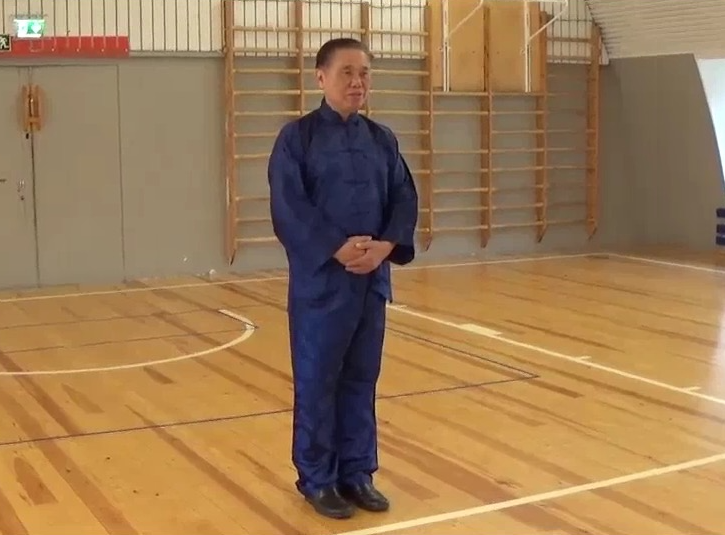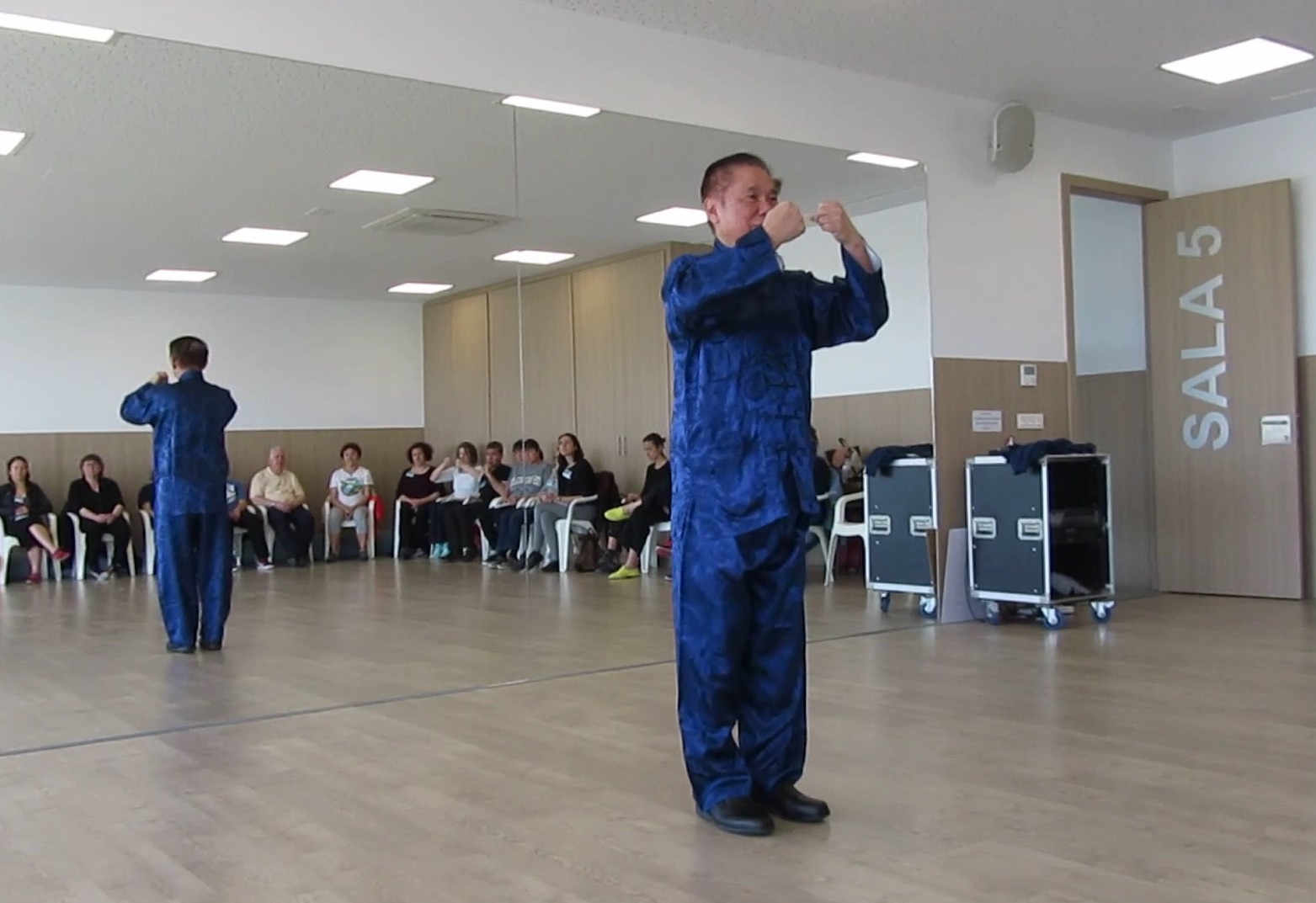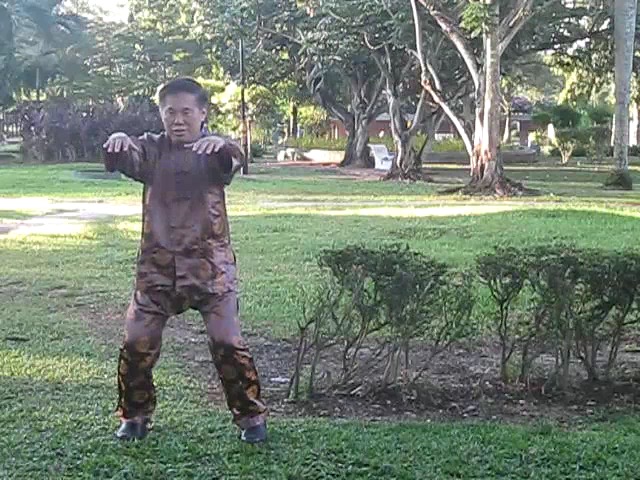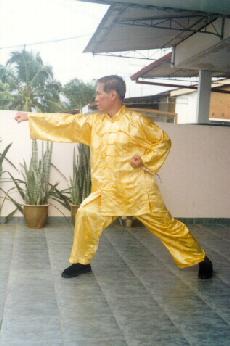SELECTION OF QUESTIONS AND ANSWERS
JUNE 2019 PART 3

Abdominal Breathing
Question 1
When I perform chi kung exercises I have a lot of saliva. Why is it?
— Walter, Austria
Answer
There are many anti-bodies in our saliva that are important for our immune system. When you have a lot of saliva after some chi kung exercises, it is a clear indication that you have improved your immune system.
Not only you produce a lot of saliva in chi kung, you also produce a lot of other fluids, like blood, lymph and lubricants. Hence, you are glowing, do not have any swelling and your joints work well.
Question 2
What is the difference between Abdominal Breathing and Toe Breathing?
— Juan, Spain
Answer
Their benefits are different. Abdominal Breathing develops chi, or energy, in the body, giving internal force that enables practitioners to have better results no matter what they do. Toe Breathing develops chi at the feet, enabling practitioners to be solid as well as agile not only physically but also intellectually.
At a physical level, when one is solid he may not be agile, and vice versa. But at an energy level, one can be sold and agile at the same time because he has better management of energy flow. In classical China, Toe Breathing was practiced by Confucian scholars as it enabled them to be intellectually solid and agile.
The answer is relative. It does not mean that when one practices Abdominal Breathing, he is not agile, and verse versa. But when we compare Abdominal Breathing and Toe Breathing, if all other things were equal, Abdominal Breathing is more solid than Toe Breathing, and Toe Breathing is more agile. If we compare an advanced practitioner practicing Abdominal Breathing, and a junior student practicing Toe Breathing, because of their levels of skills, the advanced practitioner is both more solid and more agile than the junior student.

Sinew Metamorphosis
Question 3
How often do we practice Sinew Metamorphosis?
— Mayte, Spain
Answer
It depends much on the attainment level of the practitioner.
Masters and advanced practitioners can practice Sinew Metamorphosis everyday, though they may not want or need to. On the other hand, those relatively new to chi kung should practice it just once a week. Most practitioners are somewhere in between. They can adjust the number of times of their practice.
Sinew Metamorphosis is very powerful. Practicing it too often may lead to over-training. The total time of practice is about 10 minutes (from the beginning to the end) and practitioners should practice at about 30% of their potential. If 30% is still too powerful, they should practice at a lower level. Those not in our schools may not understand what we mean.
Question 4
Why one chooses Golden Bridge over Lifting Water when developing internal force?
— Valerie, Austria
Answer
Presuming all other things were equal and when one has learnt both Golden Bridge and Lifting Water, if he wants to consolidate force, he would choose Golden Bridge, and if he wants flowing force, he would choose Lifting Water.
The choice can also be due to whims and fancies. Although he knows that Lifting Water is relatively more effective in developing flowing force, he may still choose Golden Bridge when he wants to develop flowing force because Golden Bridge also has this function. On the other hand, Lifting Water also develops consolidated force although it is more effective for developing flowing force.
There are two modes of Lifting Water -- the mobile mode and the stationary mode. In the mobile mode, a practitioner lifts his arms up and down. In the stationary mode, his arms remain stationary. Golden Bridge is only stationary; there is no mobile mode. A practitioner, if he likes, can perform Carrying Sun and Moon at the start before practicing Golden Bridge.
As a rough estimate, the ratio of consolidated force to flowing force of the various arts is as follows:
- Carrying Sun and Moon: 10 - 90
- Golden Bridge: 90 - 10
- Lifting Water Mobile Mode: 60 - 40
- Lifting Water Stationary Mode: 70 - 30
Golden Bridge is often taught in Southern Shaolin Kungfu, and Lifting Water Mobile Mode is almost always taught in Taijiquan. It is sometimes called "Beginning Pattern" as it begins a Taijiquan set. In Chen Style Taijiquan, the beginning pattern is often "Cloud Hands" or "Lazy to Roll up Sleeves", which originated from Lifting Water.

Lifting Water
Question 5
If I know that I am going to get a flu, will practicing chi kung overcome it?
— Leonie, Austria
Answer
Yes, your chi kung practice will overcome the viruses that would otherwise cause you the flu. Viruses are very minute. They have no chance again chi flow. Your chi flow will flush out the viruses. You will have better result if you have a hot drink before your chi kung practice.
Better still, practice your chi kung regularly. You don't have to wait till you feel a flu or any disease is coming before practicing. Not only will your chi flow keep you healthy, it will also give other wonderful benefits like enabling you to attain peak performance and making you peaceful and happy all the time.
You need not have to practice more. Just practice regularly. In our school, the practice takes only about 10 minutes a session, and two sessions a day. The two sessions must be a few hours apart so that you have sufficient time for your body to rest.
Question 6
You mentioned "arrow punch" in your Legends of Southern Shaolin. Can you please elaborate on "arrow punch"?
— Dimitri, Austria
Answer
The term "arrow punch" refers to a technique which indicates punching out like an arrow on any stance. Usually the Bow-Arrow Stance is used, sometimes it is the sideway Horse-Riding Stance. The fist can be a level fist or a cup fist.
Common patterns used to execute the "arrow punch" are "Black Tiger Steals Heart", "Fierce Tiger Speeds through Valley" and "Precious Duck Swims through Lotus". "Single Tiger Emerges from Cave" is frequently used not to ward off an opponent's attack, but to cover the opponent.
My sifu, Uncle Righteousness, used the "arrow punch" frequently in his fights which earned him the enviable title "Old Righteousness" in his younger days. He was called "Uncle Righteousness" when he was more elderly. His common combat sequence consisted of "Black Tiger Steals Heart", "Hide Flower in Moon" and "Fierce Tiger Speeds through Valley" which he called "Single Dragon Emerges from Sea".
Uncle Righteousness used the cup fist in "Black Tiger" and "Single Dragon", and his palm in "Hide Flower in Moon" to cover an opponent. He was so skillful in this combat sequence that his opponents could not defend.
A similar combat sequence is found in Combat Sequence 10 of our Shaolin basic 16 combat sequence, where we use "Black Tiger Steals Heart", "Fierce Tiger Speeds through Valley", "White Horse Presents Hoof" and "Angry Leopard Charges at Fire". Many years ago Douglas and another master came to see me in Soria in Spain. I taught Douglas this combat sequence in about 10 minutes, and each time he applied it he drove the master, who taught free sparring to commandos, to a wall.

Arrow Punch
Question 7
Why one chooses consolidated force over flowing force?
— Sifu Leonard Lackinger, Shaolin Wahnam Austria
Answer
If all other things were equal, when one intends to use his internal force for combat, he chooses consolidated force. When he intends to use his internal force for daily living, he chooses flowing force.
This comparison is relative. Consolidated force is also very effective for daily living, and flowing force is very effective for combat. Indeed, much of Taijiquan, especially Yang Style Taijiquan, is flowing force.
These two terms, "consolidated force" and "flowing force", were composed by me to help our students better understood what the different forms of force were and how they could be developed. A good analogy for flowing force is a river of flowing water, and a good analogy for consolidated force is larva of a volcano.
In our school, Shaolin Wahnam, flowing force and consolidated force can be interchangeably converted from one form of force to another. This is because of our chi flow. This ability, however, is not usually available to other practitioners. If a practitioner attempts to convert one form of force to another, he may negate the force.
Hence, in kungfu training one normally trains in one type of force. If he wants to train another type of force, especially when one is flowing and the other consolidated, he may cancel both types of force. I remember clearly that when I was training Tiger-Claw, I also wanted to train Cosmos Palm. My sifu, Sifu Ho Fatt Nam, told me that I should focus on Tiger Claw, and only when I had been successful, I could train Cosmos Palm.
On the other hand, our students in Shaolin Wahnam can enhance both flowing force and consolidated force if they have the opportunity to train them together. For example, if they train only flowing force, like Yang Style Taijiquan, or only consolidated force, like Iron Wire, for one year, they would get 100,000 units of internal force. If they train flowing force and consolidated force for one year, they would get 150,000 units of internal force.
However, for other students, if they train only flowing force or only consolidated force, for one year, they would get 100,000 units of internal force. But if they train the two different types of force on alternate days, they would get only 30,000 units of internal force.
The above comparison may make us look boastful, and other students may be angry. As I have often said, that is their problem, but it is good for our students to know.
Question 8
You have mentioned that Sinew Metamorphosis is triple cultivation. Can you please tell us more about the physical aspect of the art?
Answer
By triple cultivation is meant that when we practice Sinew Metamorphosis we cultivate our physical, energy and spiritual aspects. All high level chi kung and kungfu is triple cultivation.
Besides giving us a lot of internal force, which is cultivation of energy, as well as courage and morality, which is spiritual cultivation, Sinew Metamorphosis also takes care of our physical body.
For example, in Flicking Fingers, or Golden Dragons Tap on Ground, it can work our fingers and arms. It is useful for those who work with computers. In Flexing Fingers, or Sacred Tree Grows Branches, we can work on the nerves of the brain. It is useful for those with neurological problems. In Stretching Up, or Lohan Reaching for the Sky, we straighten our body muscles. It is useful for those with postural problems.
LINKS
Selected Reading
- The Unbelievable Intensive Chi Kung Course
- What is the essence of Shaolin?
- Frequenctly Asked Question on Taijiquan
- What would you Do if an Opponent Grips your both Hands and Executes a Thrust Kick to your Chest?
- From Sitting in a Wheelchair to Walking in a Street
